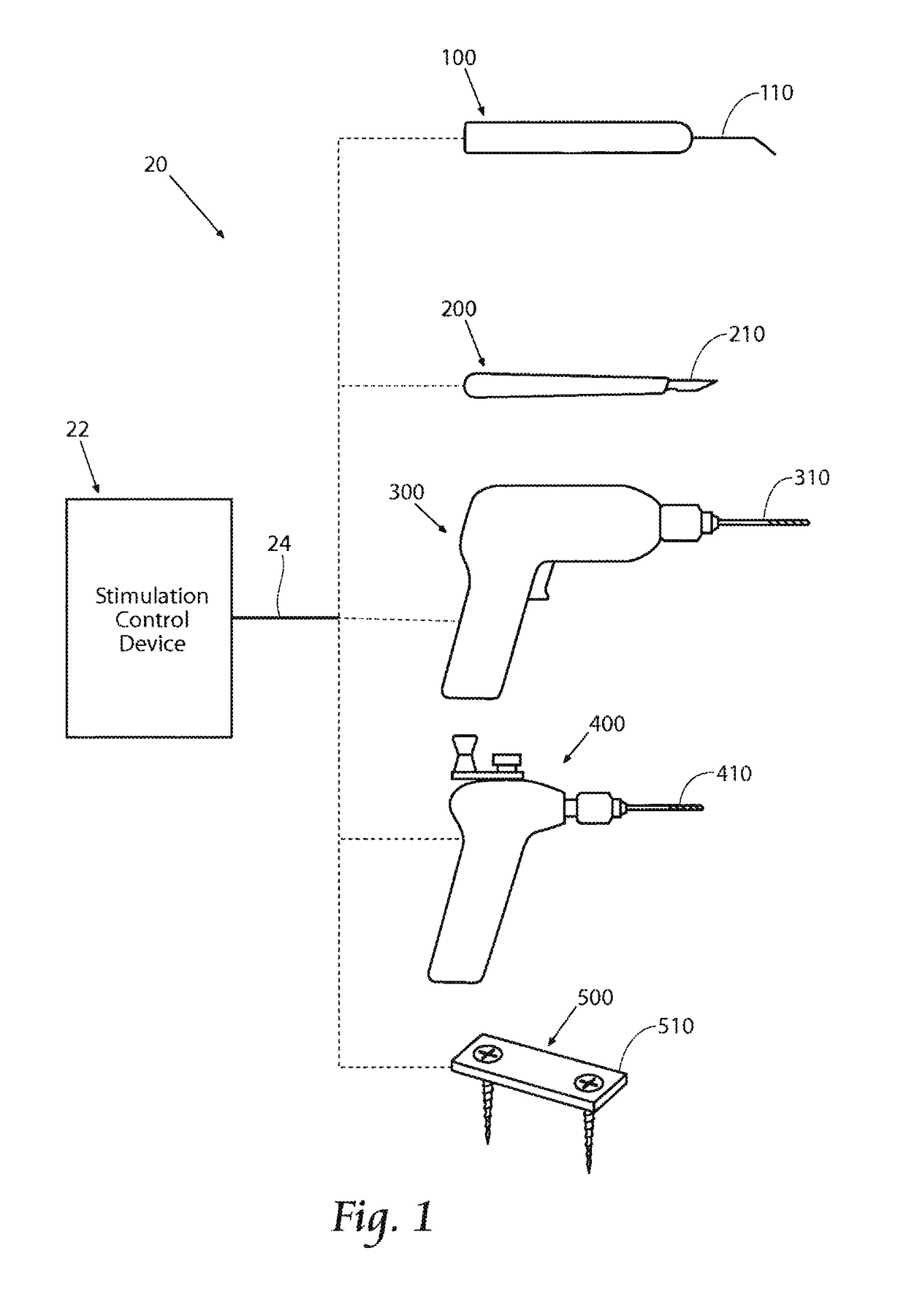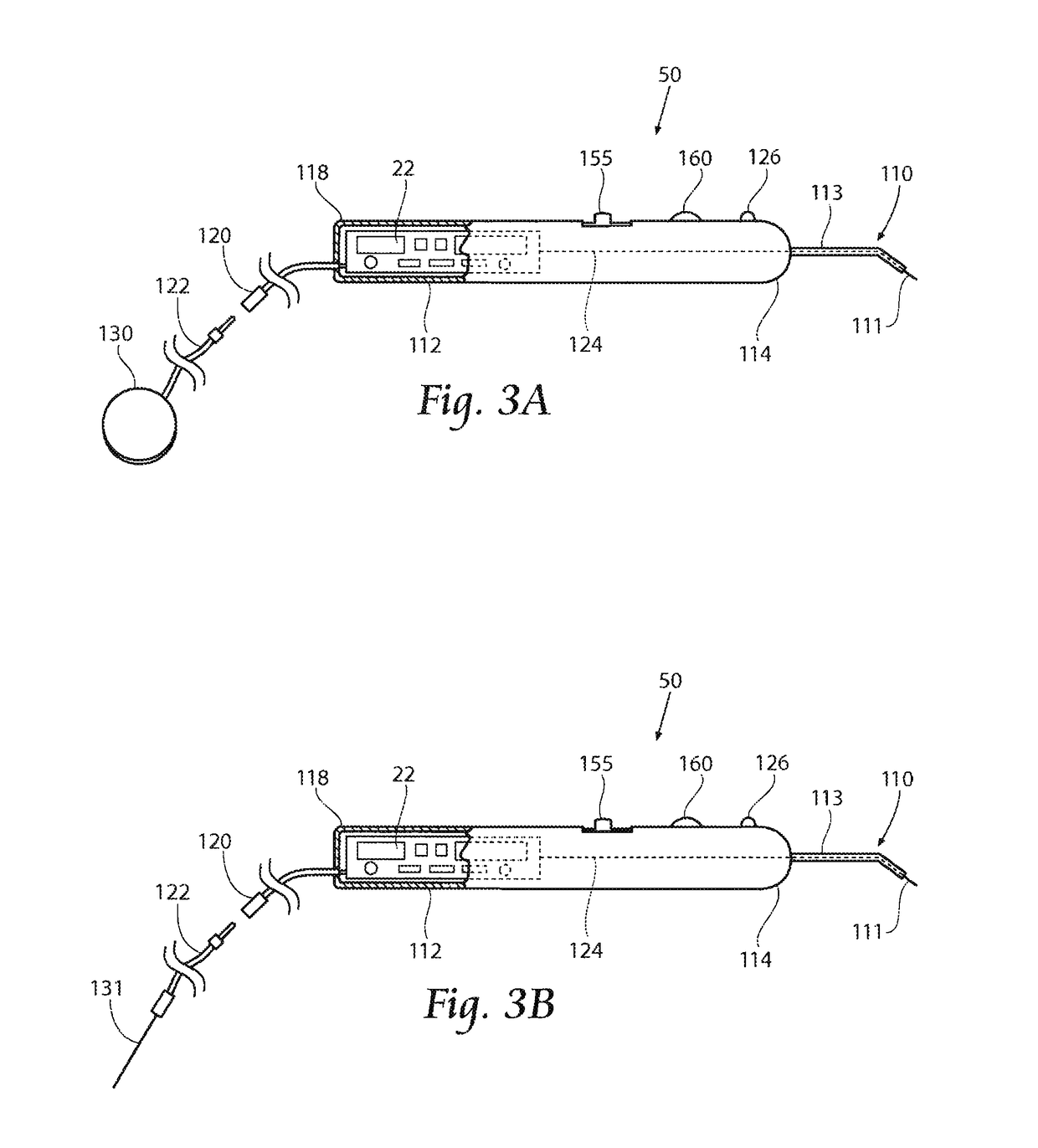Stimulation device adapter
a technology of a stimulation device and a plug-in, which is applied in the direction of osteosynthesis devices, artificial respiration, therapy, etc., can solve the problems of nerve damage, nerve bruises, stretched or even severed nerves, and surgical procedures are not risk-free, and achieve accurate evaluation of the neuromuscular system.
- Summary
- Abstract
- Description
- Claims
- Application Information
AI Technical Summary
Benefits of technology
Problems solved by technology
Method used
Image
Examples
Embodiment Construction
[0065]This Specification discloses various systems and methods for safeguarding against nerve, muscle, and tendon injury during surgical procedures or confirming the identity and / or location of nerves, muscles, and tendons and evaluating their function or the function of muscles enervated by those nerves. The systems and methods are particularly well suited for assisting surgeons in identification of nerves and muscles in order to assure nerve and muscle integrity during medical procedures using medical devices such as stimulation monitors, cutting, drilling, and screwing devices, pilot augers, and fixation devices. For this reason, the systems and methods will be described in the context of these medical devices.
[0066]The systems and methods desirably allow the application of a stimulation signal at sufficiently high levels for the purposes of locating, stimulating, and evaluating nerve or muscle, or both nerve and muscle integrity in numerous medical procedures, including, but not...
PUM
 Login to View More
Login to View More Abstract
Description
Claims
Application Information
 Login to View More
Login to View More - R&D
- Intellectual Property
- Life Sciences
- Materials
- Tech Scout
- Unparalleled Data Quality
- Higher Quality Content
- 60% Fewer Hallucinations
Browse by: Latest US Patents, China's latest patents, Technical Efficacy Thesaurus, Application Domain, Technology Topic, Popular Technical Reports.
© 2025 PatSnap. All rights reserved.Legal|Privacy policy|Modern Slavery Act Transparency Statement|Sitemap|About US| Contact US: help@patsnap.com



